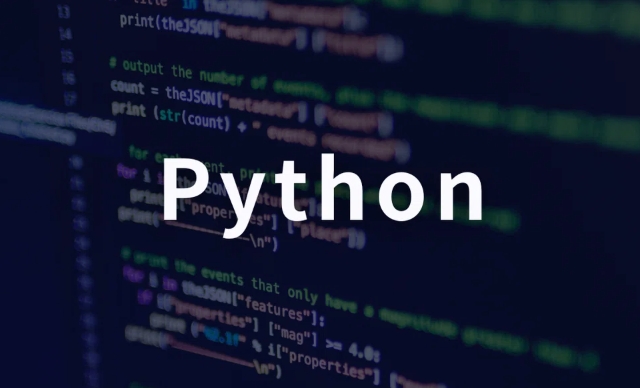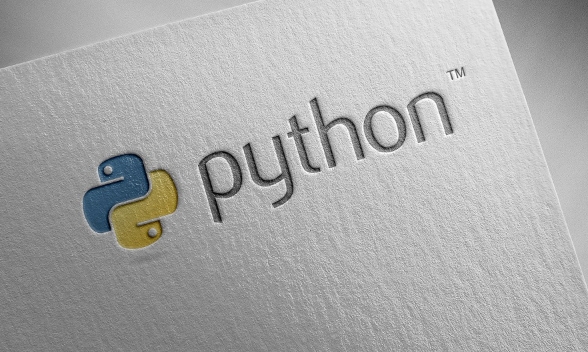Reasonable log configuration can improve problem location and system monitoring efficiency. 1. Set log level: Use DEBUG during development, and INFO or WARNING in the production environment to facilitate control of output granularity; 2. Use logger instances instead of calling logging.xxx() directly to achieve modular management and fine-grained control; 3. Add multiple Handlers (such as StreamHandler, FileHandler) to output logs to different destinations and set levels as needed; 4. Define formatted content containing timestamps, levels, module names and other information to improve log readability and analysis efficiency.

In Python projects, reasonable log configuration and usage can allow you to quickly locate problems, understand the running status of the program, and even help you optimize performance. Many people just use print() to output information at the beginning, but when the project becomes larger and the deployment is online, this method becomes very powerless. The correct way is to use Python's built-in logging module, which is powerful and flexible.

Below are some practical suggestions and configuration methods that are suitable for most practical scenarios.

Log level settings should be reasonable
Python's logging module supports multiple log levels: DEBUG, INFO, WARNING, ERROR, and CRITICAL. Each level represents a different severity. If you only output ERROR-level logs, there may be a lack of context when troubleshooting problems; if you output all DEBUG, you will easily be overwhelmed by information.
suggestion:

- The development stage is set to DEBUG and records are comprehensively made.
- The production environment is set to INFO or WARNING by default, and only critical processes and exceptions are recorded.
- When problems occur, you can temporarily lower the log level to get more information.
import logging logging.basicConfig(level=logging.INFO)
After this setting, logs at INFO and above levels will be processed, and DEBUG levels will be ignored.
Use logger instead of calling logging.xxx() directly
Many people are used to writing logging.info("xxx") , but doing so is not very standardized. The recommended approach is to create a logger instance:
logger = logging.getLogger(__name__)
logger.info("This is an info message.")There are several benefits:
- Each module can have its own logger for easy fine-grained control.
- It is easier to uniformly name and manage.
- Setting different log levels or handlers at different levels will be clearer.
For example, you can set a higher log level for a specific module without affecting the global configuration.
Add multiple handlers to distinguish output destinations
Sometimes we want to output the log to the console and write to the file, or send it to a remote service. At this time, you can add multiple handlers.
Common combinations include:
- Console output (StreamHandler)
- File record (FileHandler or RotatingFileHandler)
- Mail notification (SMTPHandler, for error level)
Sample code:
logger = logging.getLogger(__name__) logger.setLevel(logging.DEBUG) # Console output console_handler = logging.StreamHandler() console_handler.setLevel(logging.INFO) console_formatter = logging.Formatter('%(asctime)s - %(levelname)s - %(message)s') console_handler.setFormatter(console_formatter) # File record file_handler = logging.FileHandler('app.log') file_handler.setLevel(logging.DEBUG) file_formatter = logging.Formatter('%(asctime)s - %(name)s - %(levelname)s - %(message)s') file_handler.setFormatter(file_formatter) logger.addHandler(console_handler) logger.addHandler(file_handler)
In this way, INFO and above information will be displayed on the console, and DEBUG and above will be written to the file without affecting each other.
Format log content must have key information
The log format is not recommended to be too simple, otherwise it will be troublesome to analyze it later. At least it should include timestamps, log levels, module names and message content.
Common fields description:
-
%(asctime)s: timestamp -
%(levelname)s: log level name -
%(name)s: logger name -
%(message)s: log content -
%(lineno)d: Line number (useful during debugging)
For example:
formatter = logging.Formatter('%(asctime)s [%(levelname)s] %(name)s:%(lineno)d - %(message)s')
This way the log information output is more complete, making it easier to find and analyze.
Basically that's it.
logging is a seemingly simple but easy to use incorrect parts, especially in multi-module and multi-threaded environments. Just remember several basic principles: setting levels as needed, using logger objects, separating output channels, and clear formats, you can meet most needs.
The above is the detailed content of Effective Logging Configuration and Usage in Python. For more information, please follow other related articles on the PHP Chinese website!

Hot AI Tools

Undress AI Tool
Undress images for free

Undresser.AI Undress
AI-powered app for creating realistic nude photos

AI Clothes Remover
Online AI tool for removing clothes from photos.

Clothoff.io
AI clothes remover

Video Face Swap
Swap faces in any video effortlessly with our completely free AI face swap tool!

Hot Article

Hot Tools

Notepad++7.3.1
Easy-to-use and free code editor

SublimeText3 Chinese version
Chinese version, very easy to use

Zend Studio 13.0.1
Powerful PHP integrated development environment

Dreamweaver CS6
Visual web development tools

SublimeText3 Mac version
God-level code editing software (SublimeText3)

Hot Topics
 How does Python's unittest or pytest framework facilitate automated testing?
Jun 19, 2025 am 01:10 AM
How does Python's unittest or pytest framework facilitate automated testing?
Jun 19, 2025 am 01:10 AM
Python's unittest and pytest are two widely used testing frameworks that simplify the writing, organizing and running of automated tests. 1. Both support automatic discovery of test cases and provide a clear test structure: unittest defines tests by inheriting the TestCase class and starting with test\_; pytest is more concise, just need a function starting with test\_. 2. They all have built-in assertion support: unittest provides assertEqual, assertTrue and other methods, while pytest uses an enhanced assert statement to automatically display the failure details. 3. All have mechanisms for handling test preparation and cleaning: un
 How can Python be used for data analysis and manipulation with libraries like NumPy and Pandas?
Jun 19, 2025 am 01:04 AM
How can Python be used for data analysis and manipulation with libraries like NumPy and Pandas?
Jun 19, 2025 am 01:04 AM
PythonisidealfordataanalysisduetoNumPyandPandas.1)NumPyexcelsatnumericalcomputationswithfast,multi-dimensionalarraysandvectorizedoperationslikenp.sqrt().2)PandashandlesstructureddatawithSeriesandDataFrames,supportingtaskslikeloading,cleaning,filterin
 What are dynamic programming techniques, and how do I use them in Python?
Jun 20, 2025 am 12:57 AM
What are dynamic programming techniques, and how do I use them in Python?
Jun 20, 2025 am 12:57 AM
Dynamic programming (DP) optimizes the solution process by breaking down complex problems into simpler subproblems and storing their results to avoid repeated calculations. There are two main methods: 1. Top-down (memorization): recursively decompose the problem and use cache to store intermediate results; 2. Bottom-up (table): Iteratively build solutions from the basic situation. Suitable for scenarios where maximum/minimum values, optimal solutions or overlapping subproblems are required, such as Fibonacci sequences, backpacking problems, etc. In Python, it can be implemented through decorators or arrays, and attention should be paid to identifying recursive relationships, defining the benchmark situation, and optimizing the complexity of space.
 How can you implement custom iterators in Python using __iter__ and __next__?
Jun 19, 2025 am 01:12 AM
How can you implement custom iterators in Python using __iter__ and __next__?
Jun 19, 2025 am 01:12 AM
To implement a custom iterator, you need to define the __iter__ and __next__ methods in the class. ① The __iter__ method returns the iterator object itself, usually self, to be compatible with iterative environments such as for loops; ② The __next__ method controls the value of each iteration, returns the next element in the sequence, and when there are no more items, StopIteration exception should be thrown; ③ The status must be tracked correctly and the termination conditions must be set to avoid infinite loops; ④ Complex logic such as file line filtering, and pay attention to resource cleaning and memory management; ⑤ For simple logic, you can consider using the generator function yield instead, but you need to choose a suitable method based on the specific scenario.
 What are the emerging trends or future directions in the Python programming language and its ecosystem?
Jun 19, 2025 am 01:09 AM
What are the emerging trends or future directions in the Python programming language and its ecosystem?
Jun 19, 2025 am 01:09 AM
Future trends in Python include performance optimization, stronger type prompts, the rise of alternative runtimes, and the continued growth of the AI/ML field. First, CPython continues to optimize, improving performance through faster startup time, function call optimization and proposed integer operations; second, type prompts are deeply integrated into languages ??and toolchains to enhance code security and development experience; third, alternative runtimes such as PyScript and Nuitka provide new functions and performance advantages; finally, the fields of AI and data science continue to expand, and emerging libraries promote more efficient development and integration. These trends indicate that Python is constantly adapting to technological changes and maintaining its leading position.
 How do I perform network programming in Python using sockets?
Jun 20, 2025 am 12:56 AM
How do I perform network programming in Python using sockets?
Jun 20, 2025 am 12:56 AM
Python's socket module is the basis of network programming, providing low-level network communication functions, suitable for building client and server applications. To set up a basic TCP server, you need to use socket.socket() to create objects, bind addresses and ports, call .listen() to listen for connections, and accept client connections through .accept(). To build a TCP client, you need to create a socket object and call .connect() to connect to the server, then use .sendall() to send data and .recv() to receive responses. To handle multiple clients, you can use 1. Threads: start a new thread every time you connect; 2. Asynchronous I/O: For example, the asyncio library can achieve non-blocking communication. Things to note
 Polymorphism in python classes
Jul 05, 2025 am 02:58 AM
Polymorphism in python classes
Jul 05, 2025 am 02:58 AM
Polymorphism is a core concept in Python object-oriented programming, referring to "one interface, multiple implementations", allowing for unified processing of different types of objects. 1. Polymorphism is implemented through method rewriting. Subclasses can redefine parent class methods. For example, the spoke() method of Animal class has different implementations in Dog and Cat subclasses. 2. The practical uses of polymorphism include simplifying the code structure and enhancing scalability, such as calling the draw() method uniformly in the graphical drawing program, or handling the common behavior of different characters in game development. 3. Python implementation polymorphism needs to satisfy: the parent class defines a method, and the child class overrides the method, but does not require inheritance of the same parent class. As long as the object implements the same method, this is called the "duck type". 4. Things to note include the maintenance
 How do I slice a list in Python?
Jun 20, 2025 am 12:51 AM
How do I slice a list in Python?
Jun 20, 2025 am 12:51 AM
The core answer to Python list slicing is to master the [start:end:step] syntax and understand its behavior. 1. The basic format of list slicing is list[start:end:step], where start is the starting index (included), end is the end index (not included), and step is the step size; 2. Omit start by default start from 0, omit end by default to the end, omit step by default to 1; 3. Use my_list[:n] to get the first n items, and use my_list[-n:] to get the last n items; 4. Use step to skip elements, such as my_list[::2] to get even digits, and negative step values ??can invert the list; 5. Common misunderstandings include the end index not






